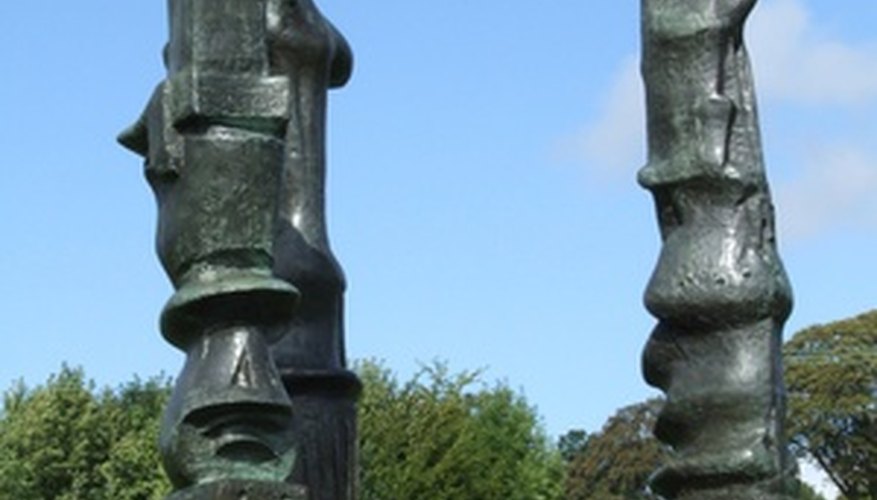Gypsum is a very soft white or sometimes colourless mineral that's officially called hydrated calcium sulphate. Gypsum is used to make Plaster of Paris, plaster, Sheetrock and cements. Reconstitute Plaster of Paris to make a gypsum block to carve. Just add water and pour the Plaster of Paris into a mould such as a paper milk carton to form a hard block. Carve the gypsum using woodcarving techniques. A gentle hand is required to prevent the gypsum from breaking.
- Gypsum is a very soft white or sometimes colourless mineral that's officially called hydrated calcium sulphate.
- A gentle hand is required to prevent the gypsum from breaking.
Draw the carving design on a piece of paper. Make sure the design fits inside the dimensions of the gypsum block. Draw the design from the front, back, sides, top and bottom. Cut out each drawing.
Tape the drawings on the appropriate sides of the gypsum block. Example: Place the arms and legs so they face forward on both sides when carving a person or animal. Trace around the outside of each cutout. Remove the cutout once the tracing is complete.
Cut away the large areas of gypsum using a craft knife, dremel or jeweller's flat file. Be careful not to push too hard because the gypsum will crack and break. Work from all sides to get the rough shape of the sculpture.
- Tape the drawings on the appropriate sides of the gypsum block.
- Work from all sides to get the rough shape of the sculpture.
Make smaller cuts as the design is taking shape. Use the different shapes of the jeweller's files to create indentations and texture. Jeweller's files shapes include flat, round, square and half-round.
Sand the piece lightly with sandpaper to finish.
TIP
Dental tools work extremely well for fine detail work in the plaster. Use dental tools if available.
